I have made some road trips in my nine years of riding, but I’ve never managed to stay gone long enough to want the trip to end. I’m 64 years old and have begun to age like my dog—seven years on the body for one year on the calendar. So I began to think about a long trip before my body declared game over. Not wanting to settle for a long ride to the local Sonic, I decided to ride around the four geographic corners of the U.S. I sold my smaller bike and bought a Gold Wing GL1800 designed for long rides and covered in chrome, farkles and lights.
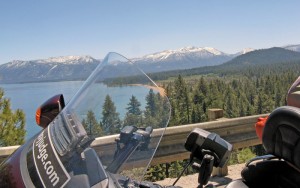
As most riders understand, I wanted to go—just because. But then I wondered if this trip guaranteed to make me smile might also put a smile on the face of a kid. Soon I had a cause, something more than “just because,” and my solo journey around the country became 4 Corners 4 Kids, an awareness ride for four child-focused charities. They are Shriners Hospitals for Children (providing free medical care for children); Ronald McDonald House (providing for the families of sick and injured children); Gulf Coast Kid’s House, a child advocacy center in Pensacola, Florida (a voice for children); and Habitat for Humanity (building homes for children).
I decided not to personally collect funds but set up a blog at gypsyjudge.com, where I posted stories and offered hyperlinks to each of the charities.
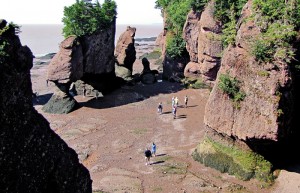
I’m a retired circuit judge from Florida, so most of my life has been minutely scheduled, accounted for and recorded. The contrast this trip offered was a pleasant challenge, since it involved precious little planning other than this: Ride from northwest Florida to the first corner in San Ysidro, California; head north to the second corner at Blaine, Washington; turn east, pop up into Canada, and then ride back south to the third corner in Madawaska, Maine. While “out and about,” I’d make a quick trip to New Brunswick to watch the world’s largest tidal flux in the Bay of Fundy, and then go south to Key West, Florida. I had no schedule other than stops at each of the four charities. I wanted to stay off the Interstate as much as possible. I had no sponsors and not much money, so generally I stopped for a big breakfast, had lunch from the produce aisle of a local grocery, and grabbed a sandwich for dinner. I packed a jar of peanut butter, sandwich thins (they’re already flat, so they don’t smush like a loaf of bread), and some fruit in my tankbag. I stayed in mom-and-pop motels as the weather or my mood dictated, tent camped some, and occasionally stayed with friends or friends of friends.
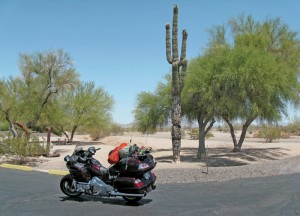
I carried a U.S. atlas on which I highlighted the roads I’d read about and hoped to take. I’d map out my ride for the next day in yellow. At the end of the day, I’d highlight the roads I’d actually ridden in blue. Sometimes they were the same. For me, one of the joys of such a long and relatively unstructured ride was that I could simply go, confident that many roads would take me in the right general direction. I was not following “the rules” for the Four Corners Motorcycle Tour (four corners in 21 days, with many riders completing the route in less than 8,000 miles). So when I found myself temporarily misplaced, even for several hundred miles, it just didn’t matter. I was on the road, riding, day after day. I hung a point-and-shoot camera around my neck and included my windshield in many photos taken on the fly of our quickly changing country. I didn’t know until I returned home how many miles I would cover. I figured the trip would take six weeks, but it proved to be seven because I sat down a week, a day here, a day there. I had a rough target of 300 miles a day, but I averaged 361 miles over the six weeks of riding.
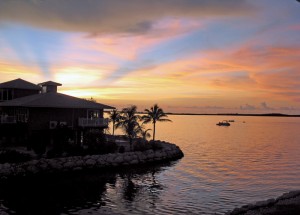
The wide range of weather added an interesting dimension to a long trip. I chose to leave northwest Florida in early June, in hopes of missing snow in the Northwest. But June meant I had to cross the deserts of Texas, New Mexico, Arizona and Southern California in the heat—which meant I stayed on Interstate 10 rather than dawdle through the cacti. Heading north up the Pacific coast, the weather was pleasantly cool, with only occasional downpours. The loop around Crater Lake in Oregon (marked in pink on my atlas as a road to take) was still closed due to snow, so I shifted west to U.S. 101, visited the redwoods, and headed up the Oregon coast. When I found myself in stop-and-go traffic in a downpour that was forecast to continue for days, I left the rocky coast, turned east, and though it continued to rain all day, I rode in relative safety north on Interstate 5.
When I turned east from Blaine, Washington, to cross the Cascade Mountains, Highway 20 was clear but snow was piled high on both sides of the road. The weather was dry and cool as I came down from the mountains and onto the rolling plains of our bread basket. The worst traffic I encountered was rush hour in Minneapolis, followed closely by rush hour in downtown Miami. The worst thunderstorm was also in downtown Miami, in foot-dragging traffic.
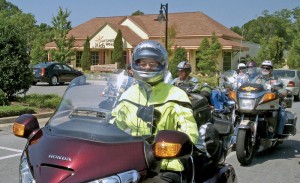
I was often asked, “Aren’t you afraid?” No, I wasn’t. “But don’t you get lonely?” No, I didn’t. I was buoyed by the incredible beauty of our country, the intricacies of nature and the omnipresent kindness of strangers. Sure, I busted my knuckles, felt overwhelmed at times and even dropped my bike in a parking lot in Sequoia National Park. But seven weeks at home wouldn’t have been perfect either. And now I have such wonderful stories to tell! It seems that an older woman traveling alone on a large motorcycle is a great ice breaker, and people routinely began conversations with me.
When I stopped for the obligatory photo at the northwest corner of Blaine, Washington, a clean-cut man about my age walked up. He explained that he had just hitchhiked from Sarasota, Florida, something that was on his bucket list. I laughed when I realized he had hitchhiked to Blaine quicker than I had gotten there on the Wing. I pointed out that he’d cheated by coming diagonally across the country, without stopping at San Ysidro, two Shriners children hospitals or a Ronald McDonald House.
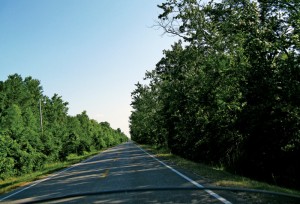
Somewhere between Washington and Maine, I parked beside a bus of tourists from Germany. When they returned from the restaurant, the crowd parted around my bike, like it was a rock in their stream of humanity. Few spoke English; I speak no German. But it was clear they were fascinated and confused to see a little old lady riding a big bike alone around the country. I handed out more postcards, and then one gentleman whispered, “Do you ride lonely?” I simply smiled since it was difficult to make myself understood on this issue, even in my native tongue.
Six and a half weeks after heading west, I pulled up to the southernmost point in the U.S. in Key West—12,186 miles after leaving Pensacola. But I still had to get home, back to the beginning, so I soon headed north, completing 12,987 miles in seven weeks. Along the way, I felt like Johnny Appleseed, as I talked with ordinary people and handed out postcards that described what I was doing and how to get more information on each of the four charities. One person at a time, I met many individuals who care about children and wanted to help, but often didn’t know how.
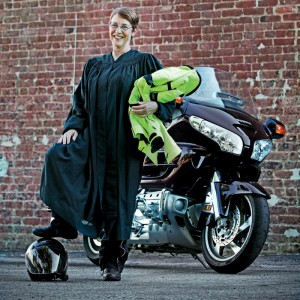
At times in my legal career I have felt cynical about mankind, and I don’t like that about me. But that summer, I spent seven weeks on my bike and experienced the kindness of humanity. I saw something of the incredible and diverse beauty of our country. I learned more about each of the four charities—how much they do for children and the vast array of volunteer opportunities each offers. I also learned many things about myself, including that I can handle that 900-pound motorcycle in all sorts of weather, even off-road in a pinch triggered by road construction on a desolate stretch. I don’t melt in either heat or water, I still enjoy tent camping, I must eat regularly and I remain directionally challenged. I also learned to distinguish between elk and moose—a moose is the size of a small SUV and you could shovel snow with its antlers. It is moose, not elk, which are outlined on the road signs in Canada that simply read “risqué.”
As I rode home, I wasn’t ready for the trip to be over. An incurable gypsy, I guess. Yet I know there are at least two kids out there who smiled for me.
There are many roads to ride and many good causes. Pick one or more and get involved. Trust me, even if you ride alone, you won’t “ride lonely.”
(This article 4 Corners 4 Kids: Alone But Not Lonely was published in the June 2013 issue of Rider magazine.)

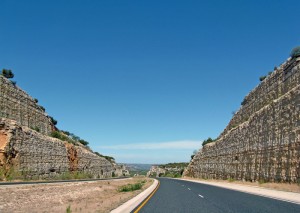
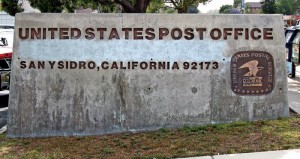
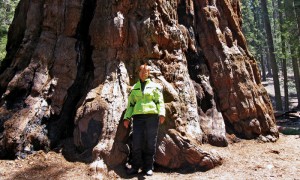
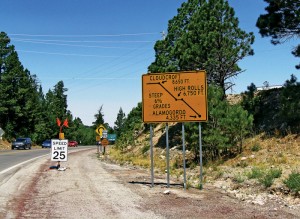
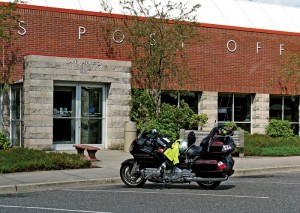
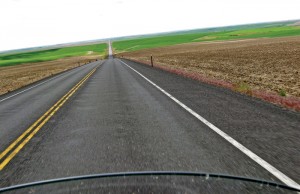
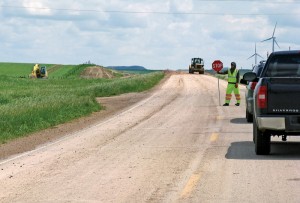
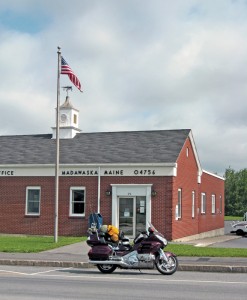

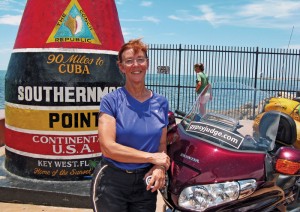
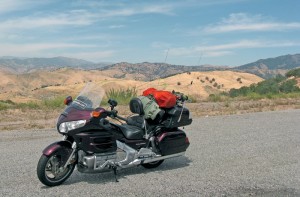
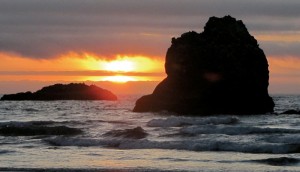
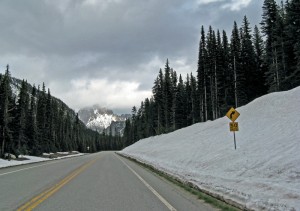
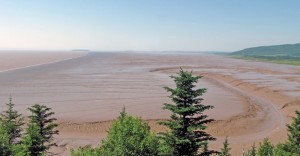
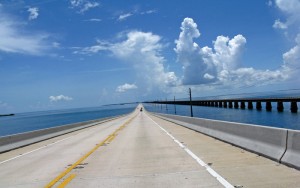
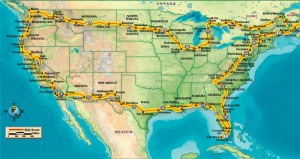
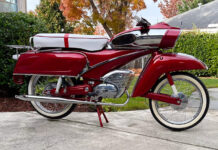
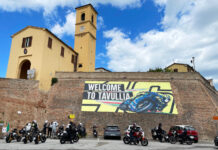
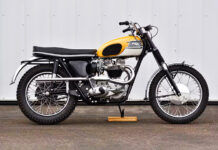
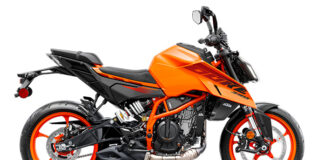
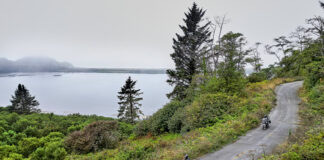
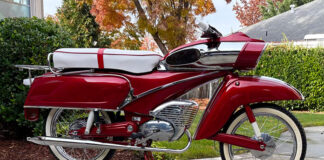

Outstanding!!! Judge Melvin I am Tony Campbell a retired Air Force SMSgt, and now a High School teacher in the Bangor Maine area. I am looking to do my 4 corners ride next summer. Looking for some tips. I ride a 2006 Honda ST1300.
Tony Campbell
Mr. Campbell, I also have a 2006 Honda ST and am planning a 4 corners ride starting from Florida where I live. I’ve found the articles and maps in Rider to be extremely helpful. I’m doing the Mighty 6 (Utah and Arizona Nat’l parks) April/May 2021 then the 4 corners after I get back.